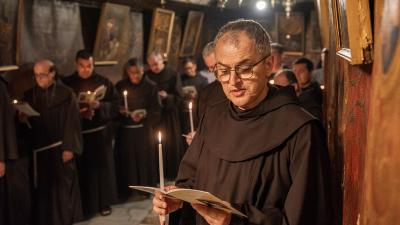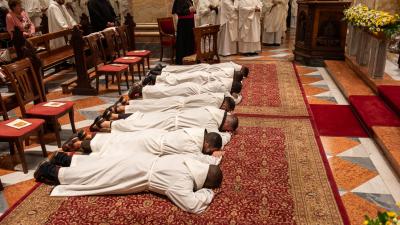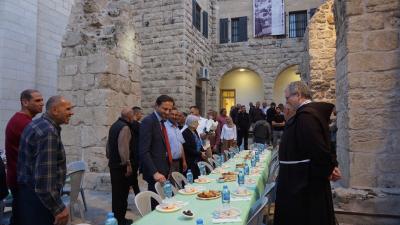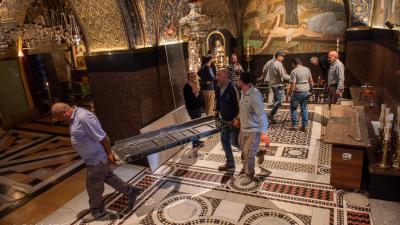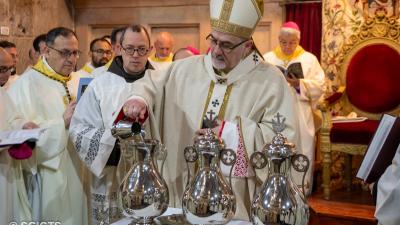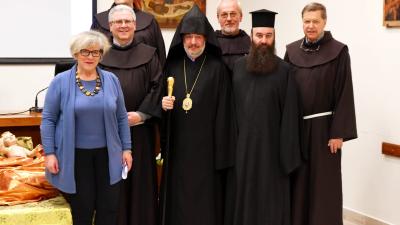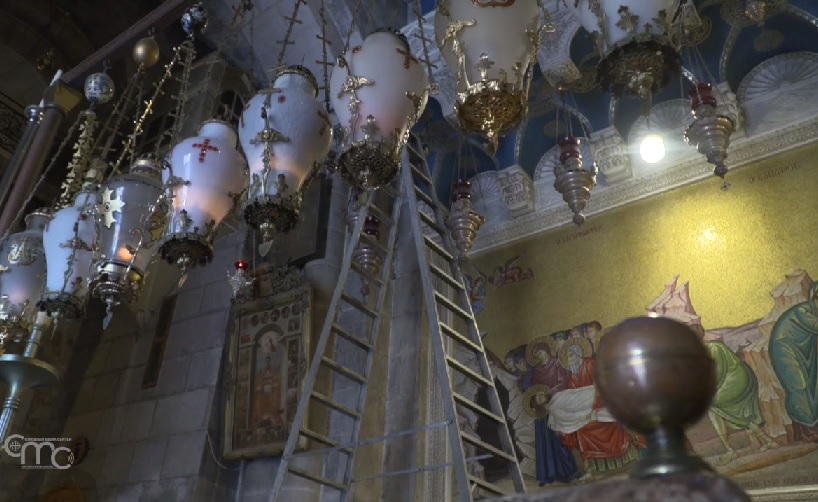
Entering the world of Status Quo, the rigid system of unwritten rules that since 1852 regulates property, space and time for the Christian communities in the Basilica of the Holy Sepulchre in Jerusalem, also means coming across the many objects that are part of the church. Some cannot be moved an inch, others ... move. This is the case with this particular aluminium staircase, which is placed behind the anointing stone the day after Ash Wednesday and it is taken away only after weeks, on the Thursday of Corpus Christi. So much so that some people are.. even a little bit annoyed.
Br SINISA SREBENOVIC, ofm
Sacristan Holy Sepulchre
"Obviously yes, it creates an obstacle for the processions etc. ... or some photographer takes the opportunity to go up to take some photos because he doesn't know what it's for. Some people think that we use it to clean something on top, instead it is part of the furniture - to say so - of the Basilica."
In the past it was used to light high candles that are no longer there today, but the point is another: it is a right of the Catholic community to place it there. This right, according to the Status Quo, if not exploited it would be lost. That is why every year it is assembled and disassembled at the right time.
Br SINISA SREBENOVIC, ofm
Sacristan Holy Sepulchre
"We're in the world of stairs and ladders...it's a bit strange but it's like this, just a few meters apart we have three stairs. Whoever enters the Basilica sees one on the facade, sees the big one and then if you pay a little attention you can see the one behind the door all year round. This ladder for Status Quo belongs to the three communities: the Latin community, the Greeks and the Armenians. It is used to open and close the door, because the door knockers are high."
Even the third staircase, the one on the facade of the Basilica, cannot be moved.
"Frozen" by the Ottoman decision to "leave everything as it was" in the mid 1800's, it is also witness to the centuries in which, under the Moslem dominion, the custody of the Sepulchre represented a very difficult undertaking.
Br SINISA SREBENOVIC, ofm
Sacristan Holy Sepulchre
"The fact is that the Basilica remained closed for days, weeks, until the groups of pilgrims arrived. When the groups arrived, it opened solemnly, and then that ladder was used to communicate with the outside world."
Even if a real code was never drawn up, the sacristan of the Holy Sepulchre must know every part of the Status Quo, and its peculiarities.
Br SINISA SREBENOVIC, ofm
Sacristan Holy Sepulchre
"Like that table next to the altar of Mary Magdalene, near the Chapel of the Apparition, which is in that position from Ash Wednesday until the feast of Mary Magdalene, where the Eucharistic gifts are prepared.
Some other objects that are in front of the tomb, such as the large chest of drawers that the friars use to put the gradual - the books of songs - for the daily liturgy, or the large lectern that was used for the reading office are still here. Those are fixed."
And for those who seek logic in all this, Brother Sinisa is very clear:
Br SINISA SREBENOVIC, ofm
Sacristan Holy Sepulchre
"Here, leaving the door, entering inside, we must leave logical reasoning aside, many times there is no logical reasoning inside the Basilica. This is it, and we have to do everything we do this way."


